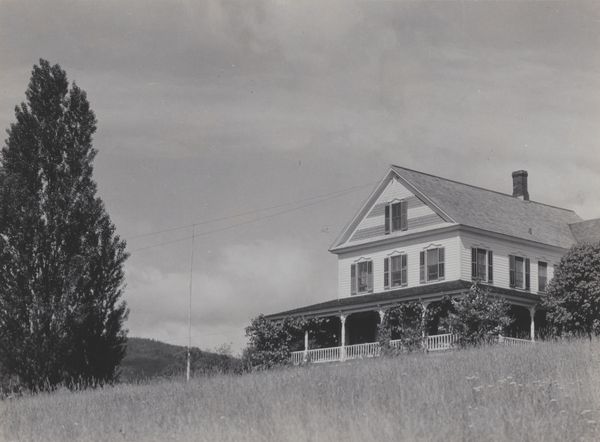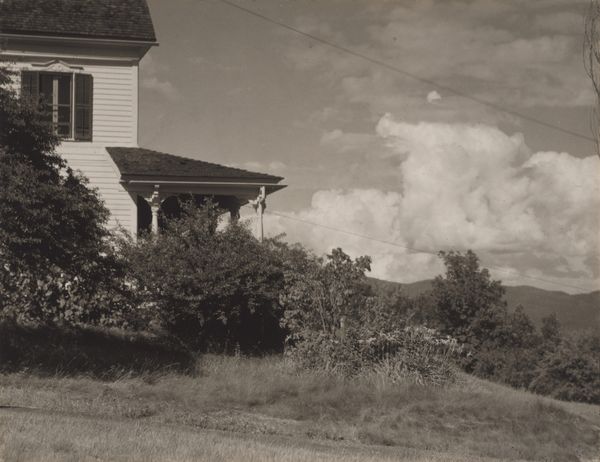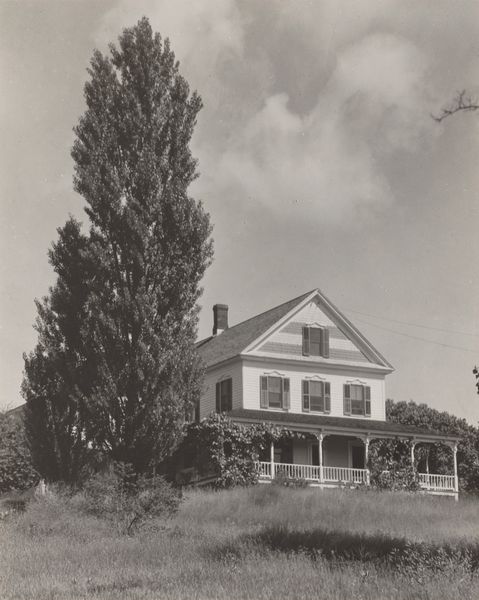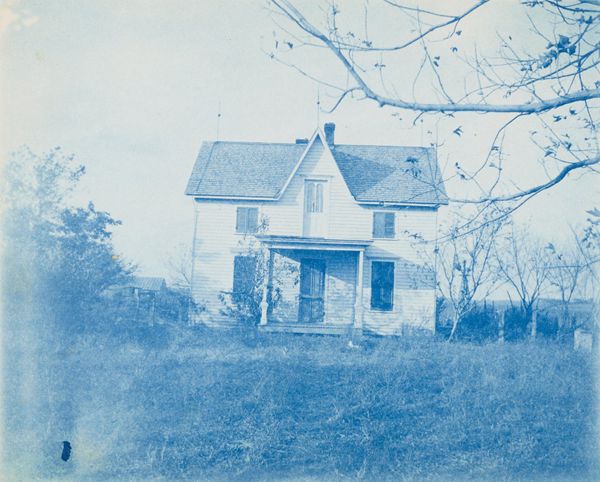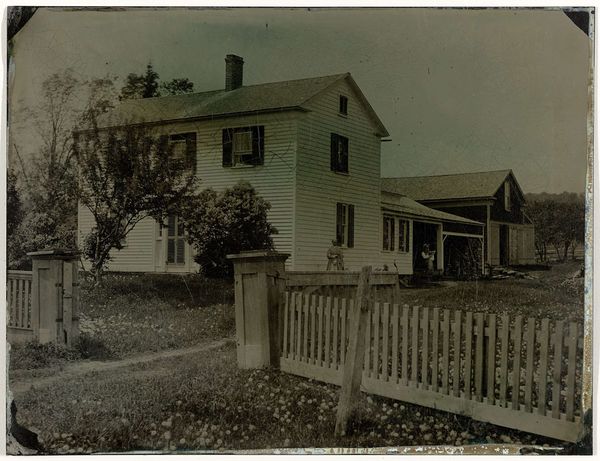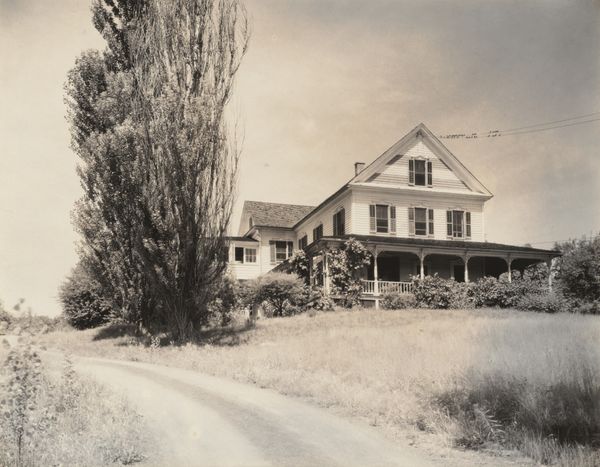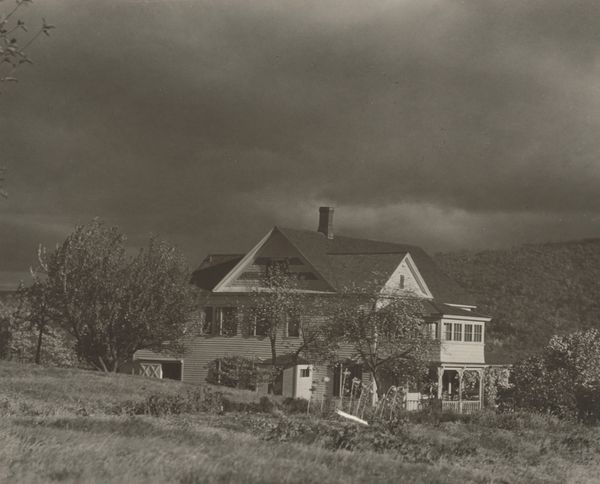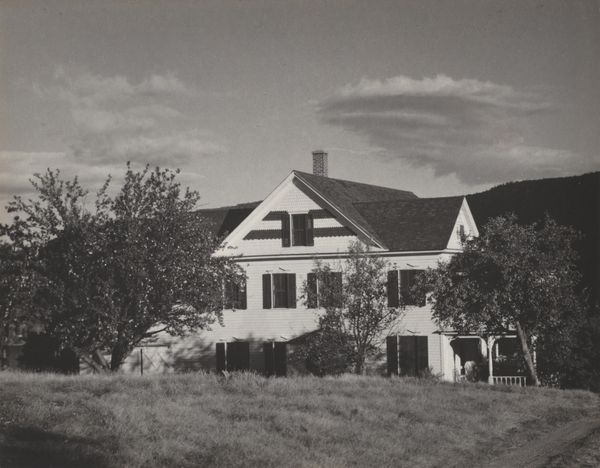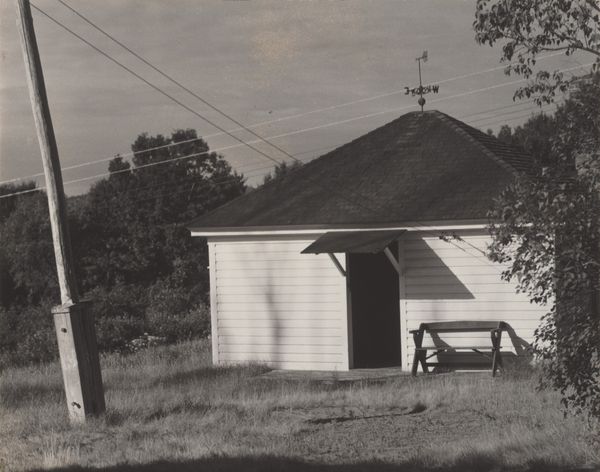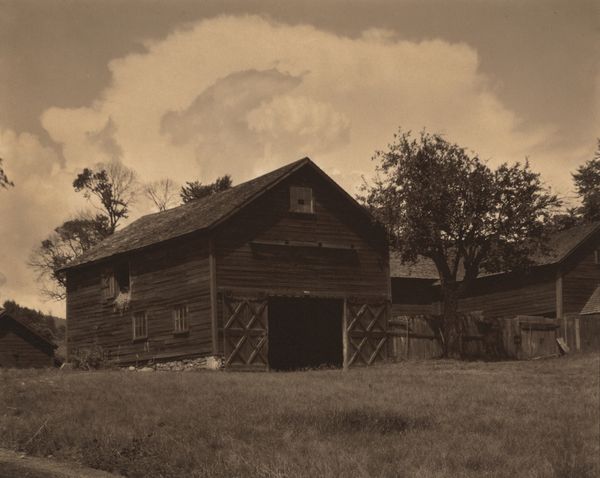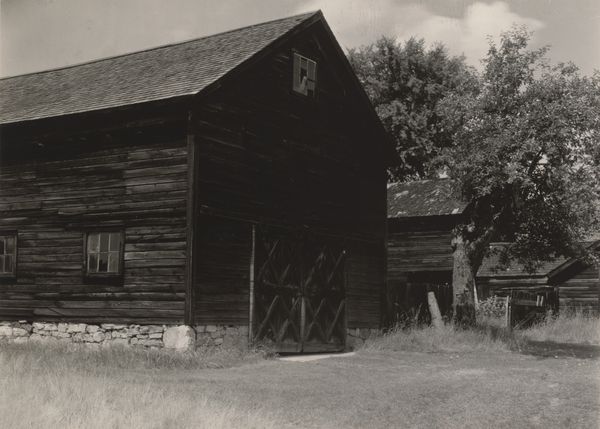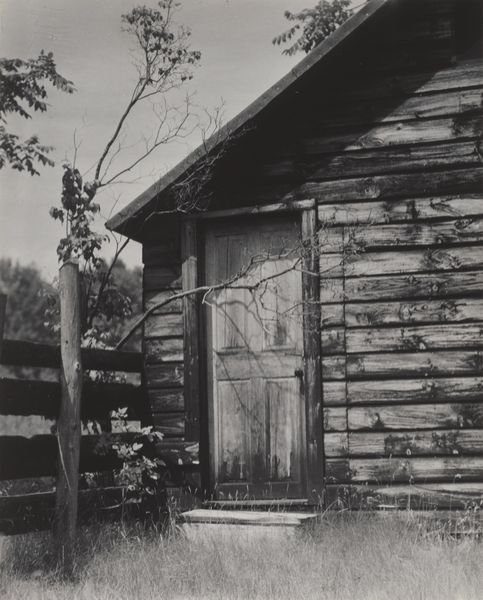
plein-air, photography, gelatin-silver-print
#
black and white photography
#
pictorialism
#
countryside
#
plein-air
#
landscape
#
rural
#
black and white format
#
photography
#
black and white
#
gelatin-silver-print
#
monochrome photography
#
monochrome
#
modernism
#
realism
#
monochrome
Dimensions: sheet (trimmed to image): 8.9 × 11.7 cm (3 1/2 × 4 5/8 in.) mount: 34.2 × 27.5 cm (13 7/16 × 10 13/16 in.)
Copyright: National Gallery of Art: CC0 1.0
Editor: Here we have Alfred Stieglitz's "House on the Hill, Lake George," a gelatin-silver print from between 1922 and 1924. There's something very grounded about it, despite the looming sky. It's such a straightforward depiction; what strikes you most about it? Curator: The gelatin-silver print process itself is key. Consider the rise of photographic technology and how it democratized image-making. This wasn't some precious oil painting for the elite. Stieglitz harnessed industrial processes—mass production of materials, darkroom techniques—to capture, manipulate, and disseminate his vision. It challenges the very definition of "art." Editor: So, the *making* of the photograph is as important as the image itself? Curator: Precisely. Look at the composition. The house isn't romanticized; it's presented as a constructed object, built with labor and resources, a physical manifestation of someone's dwelling. And consider Lake George at that time: a developing landscape increasingly accessible, perhaps even subject to commercial interests and tourism. How does this seemingly simple depiction connect to those shifts? Editor: I guess I hadn't considered the economic implications. It seems so serene on the surface. Is that intentional, do you think? Curator: Intention is secondary to consequence. This image, a product of specific technologies and presented to an evolving audience, participates in shaping how we understand the American landscape and its inherent connection to the structures – and materials – we create within it. We need to consider the photographic medium and how it altered our sense of reality. Editor: I see, framing the artwork in the context of industrial advancement provides such a different perspective. I had considered it simply representational. Curator: Art isn't created in a vacuum. Everything, from the chemicals used in the developing process to the subject it captures, has its roots in society and culture. Editor: This makes me appreciate how deeply interconnected the materials, processes, and environment are. Thank you!
Comments
No comments
Be the first to comment and join the conversation on the ultimate creative platform.
